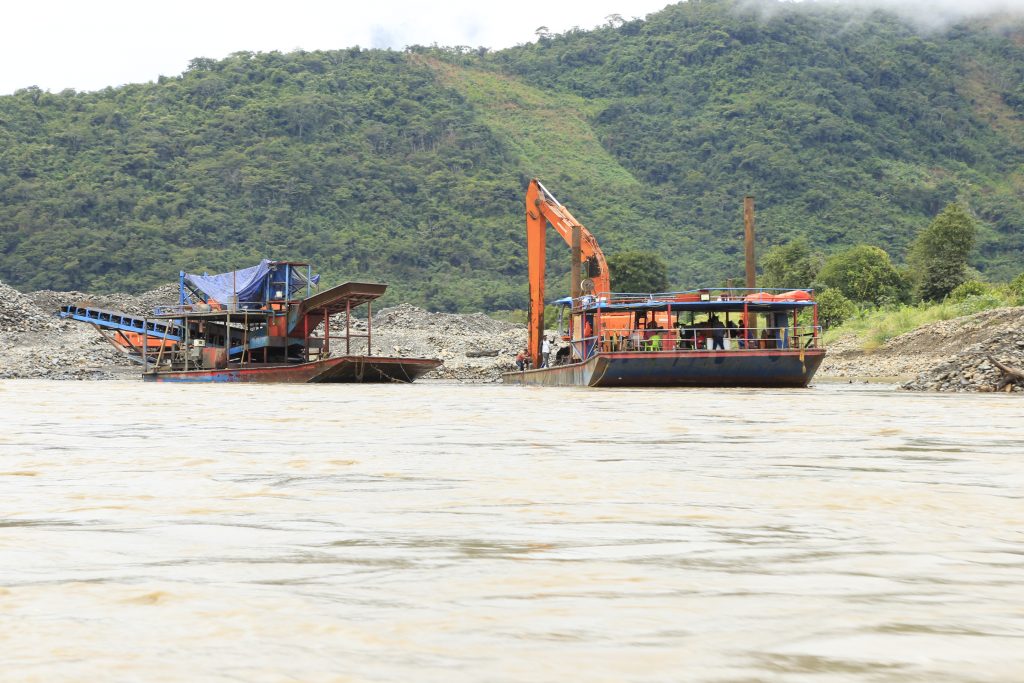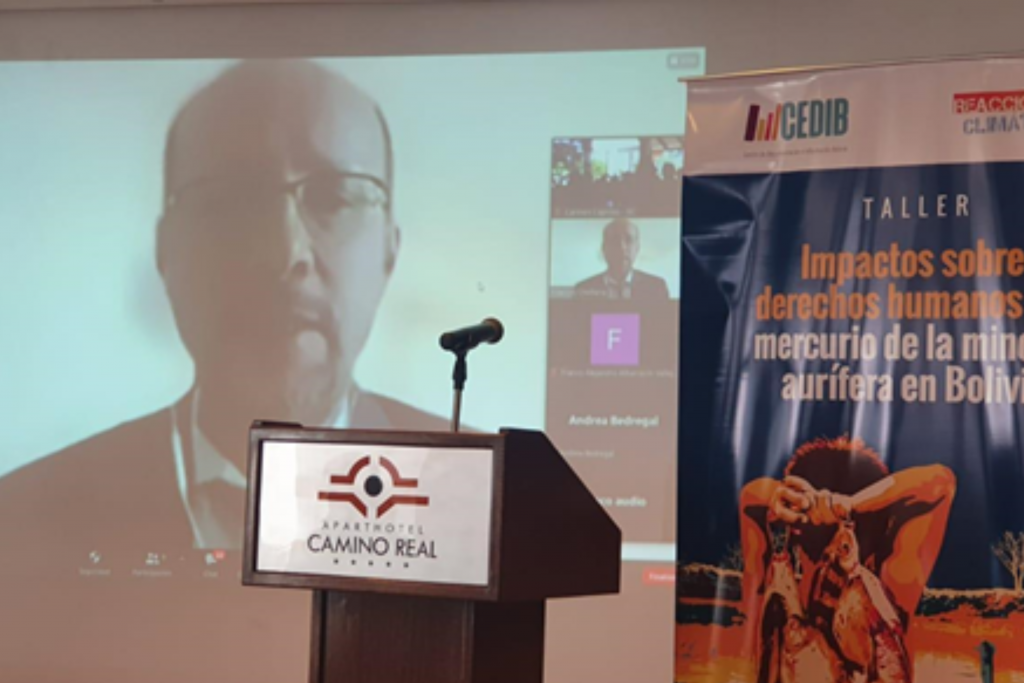This is what the economy of the Amazon…
10 July, 2024
Wednesday 13 july 2022
Header photo: Landscape of the San José de Chiquitos mountain range. Credits: Sara Crespo-Probioma.
The increased use and trade of mercury – one of the main toxic substances in the world which is often used in artisanal and small-scale gold mining – has devastating impacts on the environment and especially on people’s health.
Due to the increase of the international price of gold, pushed by the global economic recession due to the pandemic, gold mining in Latin America and Bolivia has intensified and expanded. This has serious impacts on ecosystems and indigenous peoples. Since 2015, Bolivia has increased its imports of mercury, becoming the second largest importer of mercury in the world, with evidence of illegal exports to neighbouring countries. To counter this trend CEDIB, our partner organisation in the Forests for a Just Future programme, spread evidence among UN officials and the media to pressure the Bolivian government and raise awareness in the general public.
In May 2021, CEDIB sent a note expressing concerns about the impacts of mercury use to the UN Special Rapporteur on Toxic Waste & Human Rights, based on a mercury trade study which also included Bolivia . The note was also part of a process of assessment of this problem, looking at experiences by local communities and public authorities throughout the country.
On September 28, the UN Special Rapporteur on Toxic Waste and Human Rights, Marcos Orellana, together with the UN Special Rapporteur on Indigenous Peoples, sent a Letter of Allegations to the Bolivian government expressing their concern and raising questions about the commercialization and unregulated use of mercury for gold mining in Bolivia.



A large number of media outlets, both national and international, published press releases referring to the problem and again alerting international organisms on the serious contamination by mercury in Bolivia. They also highlighted the aggravating factors of unregulated markets, including evidence of smuggling, which also impacts the broader South American region.
As a result of the extensive media coverage and the position of the UN Rapporteur, representatives of two associations of gold mining cooperatives in Bolivia publicly spoke out on the problem of mercury contamination, partially acknowledging the problem and affirming that it is the government that has to give them alternatives to carry out “responsible mining while taking care of environment and health”.
CEDIB’s efforts to address the dangers of mercury use contribute to the conservation of ecosystems and to the health of local communities livelihoods. The actions from international organizations, the reaction of gold mining cooperatives and the public opinion pressured the Bolivian government to publicly acknowledge the problem and show signs of taking effective initial actions to reduce mercury imports and address some of the impacts on health. As a result of CEDIB’s efforts to address the dangers of mercury, the Bolivian government will start with a National Plan of Action to reduce and phase out mercury, as agreed under the Minamata convention.
This case shows that well-founded evidence and a lobby and advocacy strategy using the media as an ally are essential to alert both communities and authorities about the health and environmental risks of mercury use. The success was achieved by involving and reaching a wide range of stakeholders, such as affected communities, public authorities and international organizations. It is important to interact with multiple levels (UN, local NGOs, local communities, etc) and sectors, such as the media, to influence the national government.
‘IUCN NL identified the increasing risk that mercury poses to Indigenous Peoples and Local Communities and ecosystems. Therefore, we decided to carry out a research into the use and informal trade of mercury in a number of the countries where we work in, among them Bolivia,’ Mariel Cabero, expert environmental justice at IUCN NL, explains. ‘We designed the research approach for the different countries and worked with CEDIB to gather the evidence in Bolivia then CEDIBs work and approach was key to capitalize the research done’.

